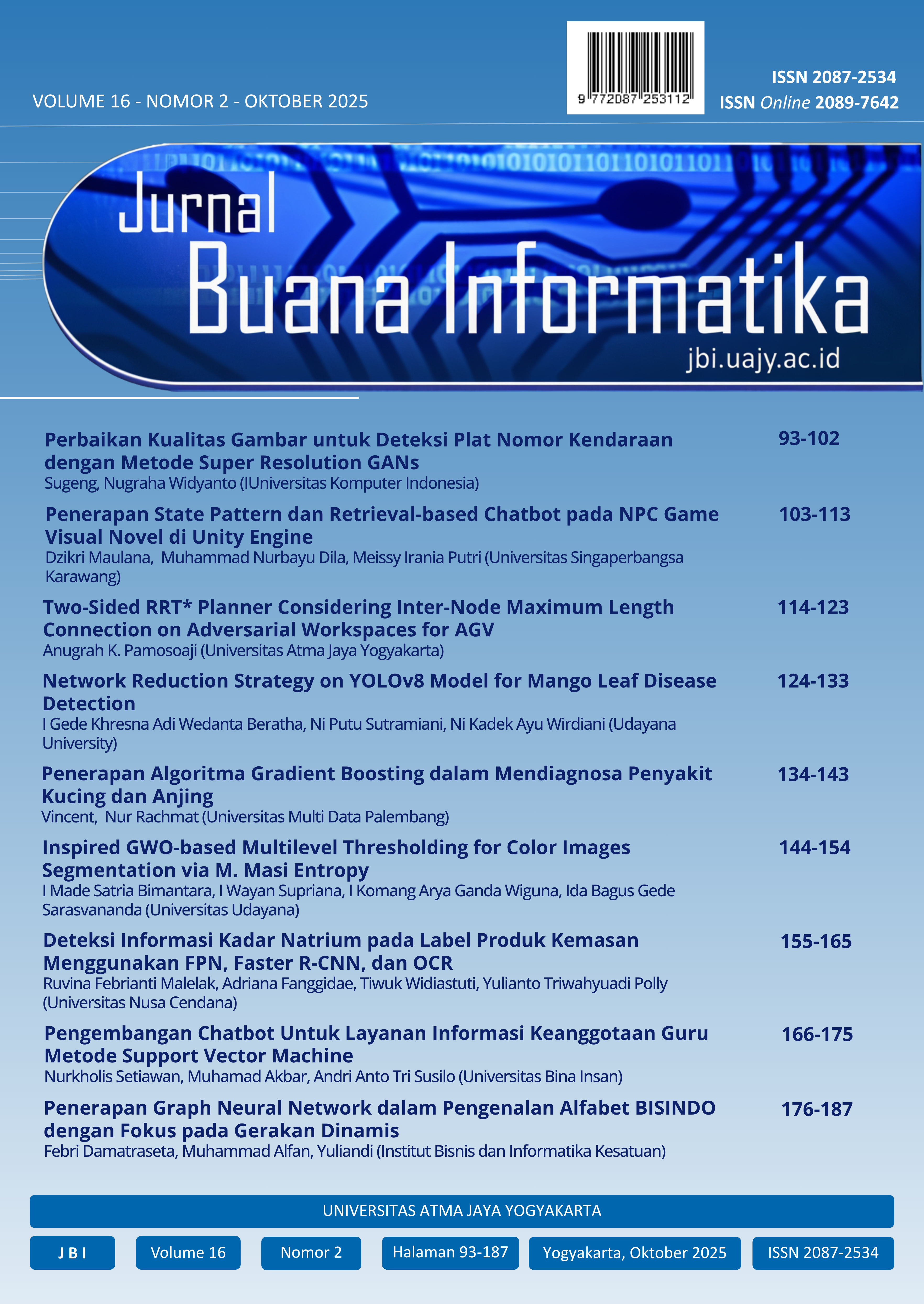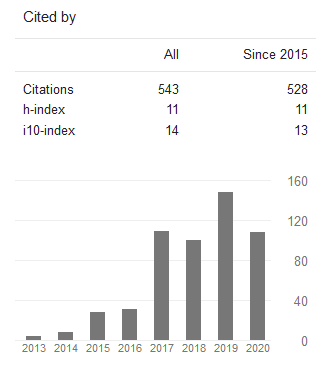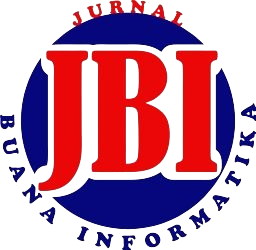Pengembangan Chatbot Untuk Layanan Informasi Keanggotaan Guru Metode Support Vector Machine
Keywords:
chatbot, Natural Language Processing, Support Vector Machine, teacher membership, keanggotaan guruAbstract
Perkembangan aplikasi chat seperti WhatsApp dan Telegram mendorong pengembangan chatbot untuk mendukung interaksi cerdas antara manusia dan komputer. Chatbot berbasis kecerdasan buatan membantu mengurangi waktu respons dan memberikan akses informasi kapan saja. Salah satu permasalahan, yaitu pertanyaan berulang terkait administrasi keanggotaan guru di PGRI Kabupaten Musi Rawas, dapat diatasi dengan chatbot berbasis AI. Penelitian ini bertujuan mengembangkan chatbot yang mampu menyampaikan informasi dan memberikan respons akurat. Chatbot dirancang dengan algoritma Support Vector Machine (SVM) dan Natural Language Processing (NLP). Hasil pengujian menunjukkan model SVM memiliki akurasi 83,54%, presisi 86,09%, dan recall 83,54%, sehingga layak digunakan sebagai model chatbot. Implementasi pada platform WhatsApp mendukung kemudahan akses informasi. Hasil penelitian membuktikan chatbot dapat merespons pertanyaan sesuai kebutuhan pengguna, sedangkan integrasi dengan WhatsApp membuat layanan informasi lebih mudah diakses serta memberikan solusi yang efisien dan responsif.
References
D. A. Dzulhijjah and R. Darodjat, “Analisis Kebutuhan Fungsional Sistem Dalam Merancang Chatbot Tiket Kapal Pt Xyz Dengan Metode Pieces,” Prosiding Seminar Nasional Sains dan Teknlogi (SAINTEK), vol. 1, no. 1, pp. 229–237, 2023.
M. P. Wicaksana, P. G. Rahardandi, and M. Fauzan, “Analisis Penerapan Chatbot: Survei,” Innovative: Journal Of Social Science Research, vol. 4, no. 4, pp. 8349–8364, 2024, doi: 10.31004/innovative.v4i4.13789.
L. Anindyati, “Analisis dan Perancangan Aplikasi Chatbot Menggunakan Framework Rasa dan Sistem Informasi Pemeliharaan Aplikasi (Studi Kasus: Chatbot Penerimaan Mahasiswa Baru Politeknik Astra),” Jurnal Teknologi Informasi dan Ilmu Komputer (JTIIK), vol. 10, no. 2, pp. 291–300, 2023, doi: 10.25126/jtiik.20231026409.
D. Akbar, I. Rizky Priadi, W. B. Pamungkas, W. Oetama, and A. Saifudin, “Transformasi Sistem Customer Service Manual Menjadi Chatbot Memanfaatkan Kecerdasan Buatan Natural Language Processing Di Pt.Xyz,” BIIKMA : Buletin Ilmiah Ilmu Komputer dan Multimedia, vol. 2, no. 2, pp. 393–397, 2024.
M. Mustaqim, A. Gunawan, Y. B. Pratama, and I. Zaliman, “Pengembangan Chatbot Layanan Publik Menggunakan Machine Learning Dan Natural Languange Processing,” Journal of Information Technology and society (JITS), vol. 1, no. 1, pp. 1–4, 2023, doi: 10.35438/jits.v1i1.16.
D. A. Fitri and Damayanti, “Komparasi Algoritma Random Forest Classifier dan Support Vector Machine untuk Sentimen Masyarakat terhadap Pinjaman Online di Media Sosial,” JIPI (Jurnal Ilmiah Penelitian dan Pembelajaran Informatika), vol. 9, no. 4, pp. 2018–2029, 2024, doi: 10.29100/jipi.v9i4.5608.
D. Lestari and L. Subekti, “Implementasi Chatbot pada Telegram sebagai Monitoring Assistant dengan Analisis Teks Klasifikasi Menggunakan Metode Support Vector Machine,” Journal of Internet and Software Engineering, vol. 5, no. 2, pp. 68–74, 2024, doi: 10.22146/jise.v5i2.12928.
R. P. Putra, A. H. Pratomo, and R. I. Perwira, “Text Message Classification using Multiclass Support Vector Machine on Information Service Chatbot in the Informatics Department UPN ‘Veteran’ Yogyakarta,” Telematika: Jurnal Informatika dan Teknologi Informasi, vol. 19, no. 3, pp. 295–310, 2022, doi: 10.31315/telematika.v19i3.7418.
E. Erlina et al., “Penerapan Artificial Intelligence pada Aplikasi Chatbot sebagai Sistem Pelayanan dan Informasi Online pada Sekolah,” Journal of Information System and Technology, vol. 4, no. 3, pp. 221–230, 2023, doi: 10.37253/joint.v4i3.6296.
A. Lubis and I. Sumartono, “Implementasi Layanan Akademik Berbasis Chatbot untuk Meningkatkan Interaksi Mahasiswa,” Media Online, vol. 3, no. 5, pp. 397–403, 2023, doi: 10.30865/resolusi.v3i5.767.
M. A. Nadzif, Saefurrohman, and R. Soelistijadi, “Penggunaan Teknologi Natural Language Processing dalam Sistem Chatbot untuk Peningkatan Layanan Informasi Administrasi Publik,” Indonesian Journal of Computer Science, vol. 13, no. 1, pp. 1227–1242, 2024, doi: 10.33022/ijcs.v13i1.3645.
Malvin, C. Dylan, and A. H. Rangkuti, “WhatsApp Chatbot Customer Service Using Natural Language Processing and Support Vector Machine,” International Journal of Emerging Technology and Advanced Engineering (IJETAE), vol. 12, no. 3, pp. 130–136, 2022, doi: 10.46338/ijetae0322_15.
F. Abdusyukur, “Penerapan Algoritma Support Vector Machine (Svm) Untuk Klasifikasi Pencemaran Nama Baik Di Media Sosial Twitter,” Komputa : Jurnal Ilmiah Komputer dan Informatika, vol. 12, no. 1, pp. 73–82, 2023, doi: 10.34010/komputa.v12i1.9418.
O. Habibie Rahman, G. Abdillah, and A. Komarudin, “Klasifikasi Ujaran Kebencian pada Media Sosial Twitter Menggunakan Support Vector Machine,” Rekayasa Sistem dan Teknologi Informasi (RESTI), vol. 1, no. 10, pp. 17–23, 2021, doi: 10.29207/resti.v5i1.2700.
M. D. Panjaitan, P. P. Adikara, and B. D. Setiawan, “Klasifikasi Spam pada Short Message Service ( SMS ) menggunakan Support Vector Machine,” Jurnal Pengembangan Teknologi Informasi dan Ilmu Komputer (JPTIIK), vol. 8, no. 5, pp. 1–10, 2024.
K. Tri Putra, M. Amin Hariyadi, and C. Crysdian, “Perbandingan Feature Extraction Tf-Idf Dan Bow Untuk Analisis Sentimen Berbasis SVM,” Jurnal Cahaya Mandalika (JCM), vol. 3, no. 3, pp. 1449–1463, 2023.
Downloads
Published
Issue
Section
License

This work is licensed under a Creative Commons Attribution-ShareAlike 4.0 International License.
Copyright of this journal is assigned to Jurnal Buana Informatika as the journal publisher by the knowledge of author, whilst the moral right of the publication belongs to author. Every printed and electronic publications are open access for educational purposes, research, and library. The editorial board is not responsible for copyright violation to the other than them aims mentioned before. The reproduction of any part of this journal (printed or online) will be allowed only with a written permission from Jurnal Buana Informatika.
This work is licensed under a Creative Commons Attribution-ShareAlike 4.0 International License.










